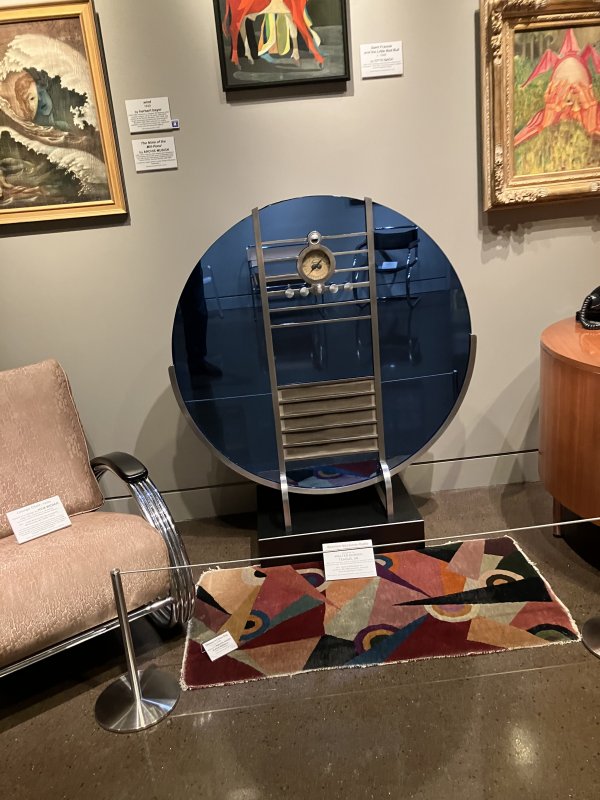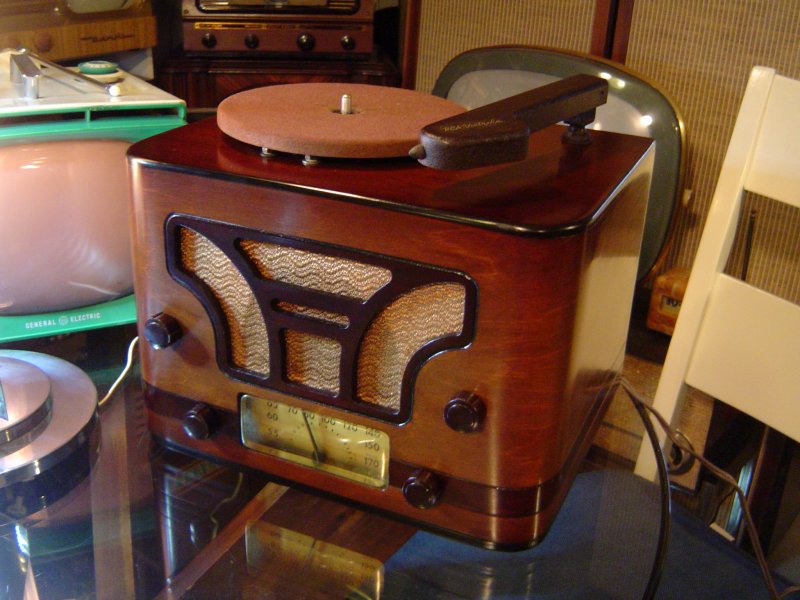decojoe67
One of the Regulars
- Messages
- 298
- Location
- Long Island, N.Y.
Here's a totally adorable little radio. A 1946 Air King model 4608A in ivory white Plaskon. It a 5-tube set with a dial lamp that not only makes the nice brass dial glow, but makes the translucent cabinet glow as well. It actually can be mistaken for a pre-war set as the early post-war years still carried over the classic art-deco designs. I have my hand in the photo to illustrate just how small this set is.





